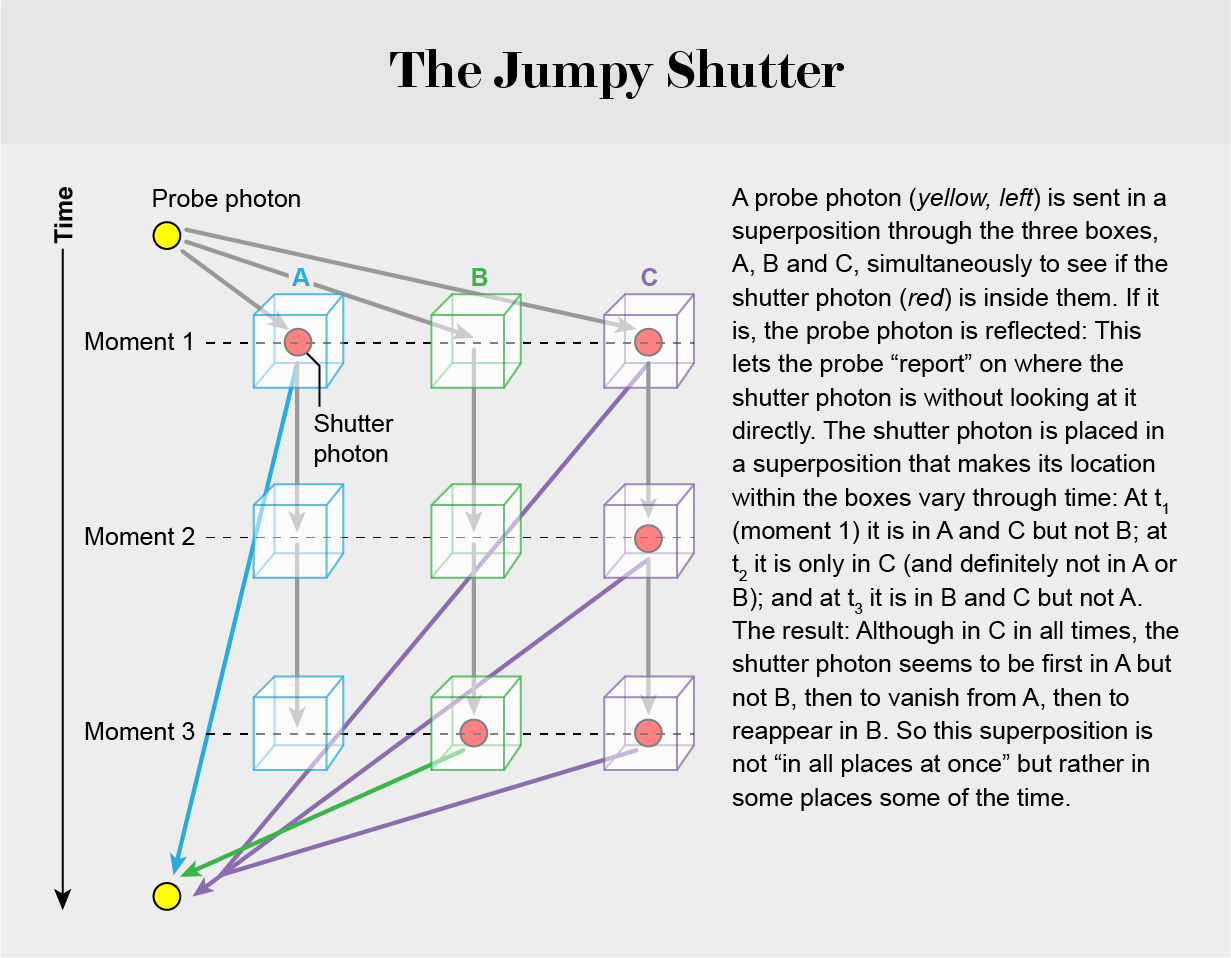According to quantum mechanics, all particles have the ability to act as waves, which is fundamental to the process of describing a superposition. This can be observed through an experiment in which particles, photons in this instance, are fired at a barrier that contains two slits. The wave-like behavior is observed through the interference of one particle on the other while they pass through separate openings. Referring to a superposition in terms of this experiment, a single photon would be fired at the barrier and pass through one of the openings, yet there would still be interference as it passed through the opening. This means that the photon particle is somehow able to pass through both openings at once and interfere with itself.
Demonstration of Superposition
For decades, physicists have attempted to record this strange phenomenon, however, when simply attempting to measure this occurrence, the superposition collapses. So how does one record this happening if as soon as it is measured, it vanishes? There is one prominent theory for a solution to this problem known as two-state-vector formalism or TSVF. This theory believes that using information known on the quantum state of particles in the past as well as the future will facilitate the measuring of superposition. Basically, TSVF asserts that quantum mechanic properties work the same both forward and backward in time. However, this process would be making an educated hypothesis as to where a particle will end up and then making conclusions on the way in which it traveled. It is only an interpretation of the superposition occurrence.In practice, this experiment would be completed with what is called a jumpy shutter, a machine in which a particle has three separate pathways through, all of which are recorded in three stages. Therefore, the location of the particle will be seen in the separate stages and allow physicists to determine the path of the particle.
This is basically a physical application of the concepts of quantum mechanics; which is why many are skeptical of its practicality. Consequently, in collaboration with another relatively new development in the physics world, I believe that the process could be measured and observed without its preexisting boundaries.
Nasa has recently described a new development in which they will create a lab in of which has a temperature that is colder than any known temperature in the universe. Specifically, the lab will be created on the space station, and allow for temperatures one-billionth of a degree above absolute zero. This extreme low-temperature lab would allow for the slowing of particles and a more exact observation of their behavior.
Sources



Comments
Post a Comment